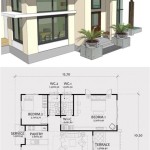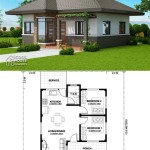How to Make a Floor Plan of Your Home Free
Creating a floor plan of a home can be a valuable undertaking for various reasons. Whether one is planning a renovation, redesigning the interior, selling the property, or simply seeking a better understanding of the spatial arrangement of a dwelling, a floor plan serves as a crucial visual tool. Fortunately, generating a floor plan does not necessitate expensive software or professional assistance. Numerous free resources and methodologies are available to facilitate this process. This article will outline several methods for creating a floor plan without incurring any costs.
Before delving into the specific methods, it is essential to gather the necessary tools and materials. These generally include a measuring tape (preferably a long one, at least 25 feet), a pencil, paper (graph paper is highly recommended for its grid-like structure which aids in precise drawing), and a level. For digital approaches, a smartphone or tablet with a camera is also required. Accuracy is paramount; therefore, it is advisable to double-check all measurements to minimize discrepancies in the final floor plan.
Method 1: Manual Measurement and Drawing
The most basic and accessible method involves physically measuring the rooms and walls of the home and then translating these measurements onto paper. This approach requires meticulous attention to detail and careful execution to ensure an accurate representation of the space. Begin by sketching a rough outline of the home's perimeter. This initial sketch does not need to be perfectly to scale but serves as a visual guide for subsequent measurements.
Next, systematically measure each room and wall. Start with the exterior walls, noting their length and any irregularities, such as alcoves or protruding sections. Then, move to the interior walls, measuring their length and recording their position relative to the exterior walls. It is crucial to measure the thickness of the walls as well; this is often overlooked but is important for accurate space representation. Note the location of doors and windows, including their dimensions and their distance from the corners of the walls. This information is important for future space planning.
As one measures, immediately transfer the data onto the sketch. Use the graph paper grid to maintain proportionality. For example, one square on the graph paper could represent one foot or one inch, depending on the scale one chooses. Be consistent with the scale throughout the entire floor plan. It is better to use a larger scale if you need higher precision. Accurately represent the location of doors and windows, including their swing direction if desired. Include any permanent fixtures, such as fireplaces, built-in cabinets, or radiators as these fixtures will likely affect the furniture layout.
Repeat this process for each room in the home. When all measurements have been recorded and transferred to the sketch, review the floor plan for any inconsistencies or errors. Double-check critical dimensions, such as the overall length and width of the house, to ensure they align with the sum of the individual measurements. Correct and adjust as necessary. This method is purely analog; therefore, the quality of the floorplan depends heavily on the user's drawing skills and the accuracy of the measurements taken.
Method 2: Utilizing Free Online Floor Plan Software
Several free online floor plan tools offer a more sophisticated and user-friendly approach to floor plan creation. These tools typically provide a graphical interface where one can draw walls, add doors and windows, and insert furniture and other objects. While some of these tools may have limitations in their free versions, they often provide sufficient functionality for creating a basic floor plan. Many of these resources are browser-based, meaning software installation is not required.
Before utilizing any online resource, assess the requirements of the project. Most free applications will place a limit on the number of projects that are possible in the free tier. Some examples include online based floor plan tools such as: Floorplanner Basic, RoomSketcher Free, and Planner 5D. These platforms allow users to draw walls using a click-and-drag interface. Input the dimensions of walls, doors, and windows to ensure accurate scaling. Some platforms that may offer freemium subscription models are: Homestyler and SmartDraw.
To create a floor plan using these tools, begin by selecting the desired scale. Most programs allow one to choose from a variety of units, such as feet, inches, or meters. Then, draw the exterior walls of the home, using the measured dimensions. Accurately position doors and windows, selecting the appropriate size and style from the program's library. Add interior walls, creating the layout of each room. Many programs provide a library of furniture and other objects that can be dragged and dropped into the floor plan. This can allow one to visualize the space.
Pay attention to the alignment and positioning of objects to ensure that the floor plan is accurate and visually appealing. Some programs also allow one to add annotations or notes to the floor plan, which can be helpful for documenting specific details or requirements. Once the floor plan is complete, most programs allow one to download it in various formats, such as PDF or JPEG. These can be used for sharing. It is imperative to carefully review and proof the floor plan for any discrepancies before finalizing it. Free online tools may not be as powerful or feature-rich as paid software, they offer a convenient and accessible way to create a floor plan.
Method 3: Leveraging Smartphone Apps and Augmented Reality
Modern smartphone technology, particularly features like augmented reality (AR), offers a potentially simpler way to generate a floor plan. Several smartphone apps utilize the device's camera and sensors to estimate room dimensions and create a basic floor plan. While these apps may not be as precise as manual measurement or dedicated software, they can provide a reasonably accurate representation of the space in a shorter amount of time. These tools are typically more precise on devices with LiDAR scanners.
Download and install a floor plan app that utilizes AR technology. Some popular options include Magicplan, RoomScan Pro (some features are free, others require payment), and Measure by Google. These apps use AR to map the dimensions of a room by scanning the space with the smartphone's camera. Calibration may be required before starting the scan to ensure accurate and consistent measurements. Follow the app's instructions to scan each room. Typically, this involves slowly moving the phone around the perimeter of the room, ensuring that the camera captures all walls, corners, and openings. Some apps can automatically detect doors and windows, while others may require manual input.
After scanning a room, review the app's generated floor plan. Correct any inaccuracies or gaps in the measurements. Some apps allow one to manually adjust the dimensions of walls, doors, and windows to fine-tune the floor plan. Repeat this scanning process for each room in the home, ensuring that the app successfully links the rooms together to create a cohesive floor plan. Most apps allow one to add furniture and other objects to the floor plan, providing a more realistic visualization of the space. Once completed, the floor plan can be exported in various formats, such as PDF or DWG. It is important to acknowledge that the accuracy of these apps can vary depending on the quality of the device's sensors, the lighting conditions, and the user's scanning technique. Therefore, relying solely on these apps for critical measurements may not be advisable. However, they can offer a quick and convenient way to generate a preliminary floor plan.
Regardless of the method chosen, several general tips can enhance the accuracy and effectiveness of the floor plan. First, ensure that all measurements are taken in the same units (feet, inches, meters) and that the scale is consistent throughout the floor plan. Second, pay close attention to the details, such as the location of electrical outlets, light switches, and other fixtures. These details can be crucial for planning renovations or redesigning the interior. Third, label each room and space clearly on the floor plan. This will help avoid confusion and ensure that the floor plan is easily understood by others.
When using any of the digital methods, always save the floor plan frequently to avoid losing work due to software crashes or other interruptions. Create multiple iterations of the floor plan, experimenting with different layouts and design ideas. Share the floor plan with others and solicit their feedback. Fresh perspectives can often identify areas for improvement or alternative solutions that were not initially considered.
Creating a floor plan of a home without incurring any costs is achievable through various methods. Manual measurement and drawing require patience and precision but are accessible to anyone with basic tools. Free online floor plan software offers a more user-friendly and visually appealing approach, while smartphone apps leverage the power of augmented reality for quick and convenient floor plan generation. By following the guidelines outlined in this article and carefully considering the specific requirements of the project, one can create a functional and accurate floor plan that serves as a valuable tool for various purposes.

Blueprint House Plan Design Architecture Home Drawing Structure And Vector Ilration Free

Blueprint House Plan Images Free On Freepik

The Most Popular 1970s House Plans Ranch Contemporary Split Levels Other Groovy Home Designs Americana

Blueprint House Plan Images Free On Freepik

The Most Popular 1970s House Plans Ranch Contemporary Split Levels Other Groovy Home Designs Americana

Blueprint House Plan Images Free On Freepik

Where To Get House Plans Tips For Homeowners

How To Read Floor Plans With Dimensions A Guide

Step By How To Build A House

15 Instagram Grid Layout Examples You Can Try Plann By Linktree
Related Posts








